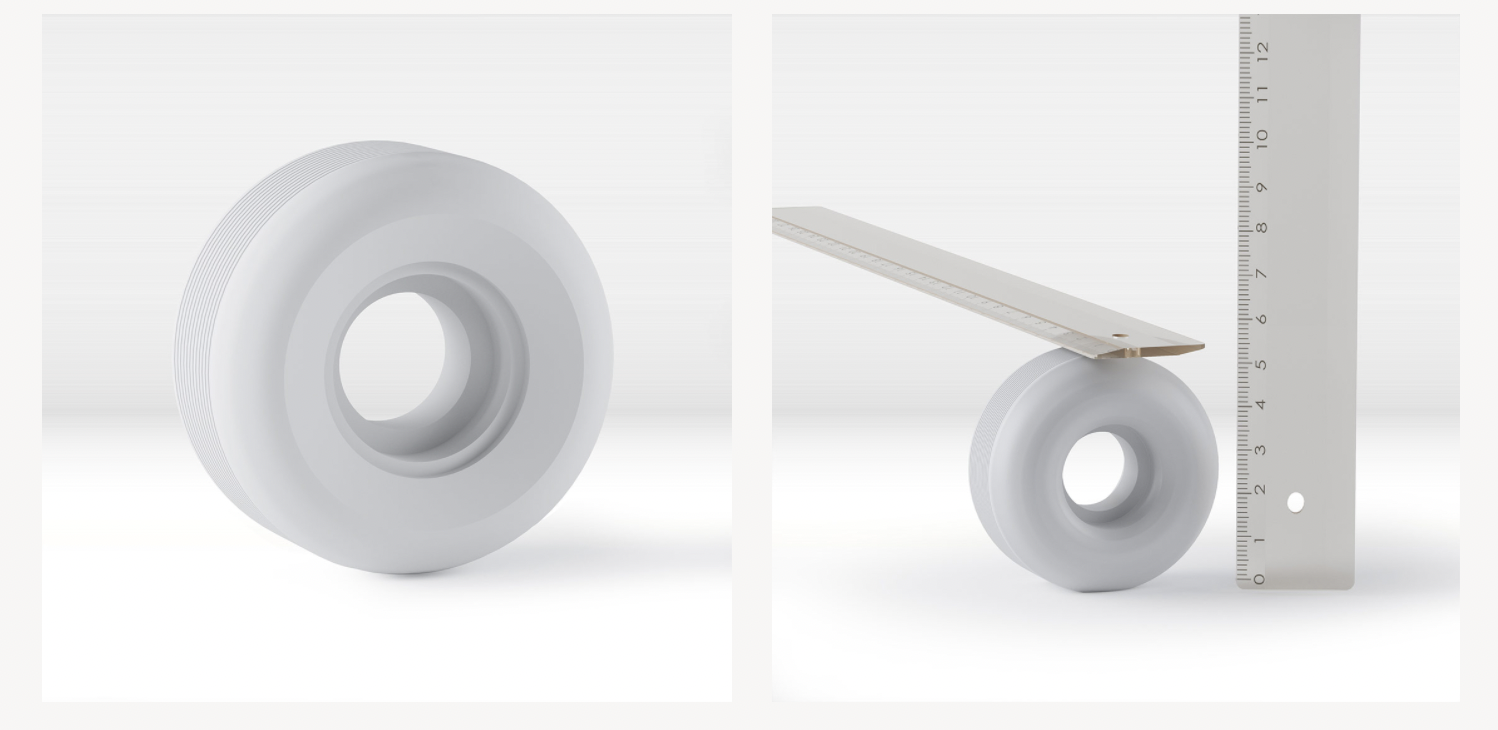You have maybe noticed that most standard skateboard wheels are marked 'HR'. And some pro wheels are marked 'SHR'. But did you know what this means?
HR stands for High Rebound.
SHR stands for Super High Rebound.
Polyurethane with a high rebound is easier to control during power slides, pivots and reverts. A higher rebound also leads to fewer flat spots.
The hardness of skateboard wheels is counted in the durometer A scale:
Longboards wheels are very soft, with a durometer of around 70A.
Wheels on skateboard completes are between 95A on cheap completes to 99A on high-end completes.
100A is the hardest that can be measured in the durometer A scale. Therefor skateboard wheel companies use the durometer B scale for harder wheels.
An 83B wheel for example would be equivalent to 103A. 84B equivalent to 104A.
There is a large variety of skateboard wheel polyurethanes. It is the quality and hardness of the polyurethane that determines the price of the wheels.
The higher the rebound and the harder the material, the more precise and expensive the required material and the more complicated it is to get the polyurethane mixture right. Therefor a set of SHR84B wheels is often at around four times the production price of a set of HR95A wheels.
Professional skateboard wheels are made by a specialized high-end MDI Polyurethane. This Polyurethane must be hard yet flexible, soft enough but still durable when sliding, and it must be consistent for you to pivot in or out of tricks without getting stuck or slipping away. Polyurethane changes color when exposed to air and light, therefor another key characteristic skateboard wheel manufacturers look for when mixing polyurethane is the durability of the color. Especially white skateboard wheels are hard to be made in such a way, that the color does not change within the first month of unpacking new wheels.
On top of these stringent PU requirements, the production process must be calibrated perfectly. The temperature, mould filling speed, pressure and curing time determines the amount of air bubbles in the material and the all-over final quality of the wheels.
If you can remember the above, you now know more about skateboard wheel productions than most skate shop owners.
Now let’s turn you into a skateboard wheels pro!
Skateboard wheels come in a variety of shapes. The shape is defined by a wheels total width, contact patch width (ride surface) and side cut.
The most popular wheel brands usually invent a variety of shapes - these shapes then become the standard in the market and the main reference for most smaller wheel companies. The most popular shapes in 2021 were the “normal shape” which you would define as the most common shape in 2021. The traditional round shape, which however is quickly declining in popularity, the Bones V-series, and Spitfire’s conical shape.
The shape of a wheel is determined by the skateboard wheel mould and the cut. The most professional skateboard wheel moulds are made by aluminum and so precise, that after moulding new wheels, they barely need to be cut. Plastic moulds on the other hand can deform under pressure or when filled with hot molten polyurethane and therefor make wheels that wobble. These wheels must then be fixed during the cutting process.
After moulding new wheels, they are fixed to a motor, to spin them at a high speed. While spinning, the wheels are cut into the perfect shape. Wheels made by lower quality moulds must be cut from all sides, to create a well rounded shape and clean edges. Wheels of high quality mould must barely be cut - only the threads have to be added to the contact patch of the wheels because the high quality aluminum mould gives the wheel the perfect shape right from the beginning.
The contact patch of wheels is the surface of the wheel that touches the ground when rolling. The thread width is usually the same or a little less than the contact patch. The threads give the rider a bit more grit and control. However, after only a day of skateboarding the threads are usually already rode off and not visible anymore.
The production price of different shapes depends on a skateboard wheels mass (material use), if it can be sold right out of the mould or if the edge must be cut manually, and how many moulds of that shape a skateboard wheel factory has (the more wheel-moulds you have of a specific shape, the faster you can run the skateboard wheels production).
After moulding, baking, curing and cutting the wheels they are printed on. This can be done by pad printing or with the 2HEX digital skateboard printer. Pad printing requires plates which are made by plastic or metal. Making plates is expensive and takes a lot of time, however pad printing is fast and cheap. Therefor pad printing is best for mass productions and large quantities. 2HEX digital printer is best if you want less than 200 sets of wheels per design, and you need those done within one day. The 2HEX digital printer does not require plates or other complicated pre-print setups, and can print your wheels within minutes.
After printing on the wheels they are usually shrink wrapped. Some companies like to wrap custom cardboards with the wheels specifications around their wheels inside the shrink wrap. Usually 50 sets of shrink wrapped wheels are then placed in a big black plastic bag and packed tightly, to prevent them from getting in contact with fresh air or sunlight. This way the wheels are kept white or in any other original material color for a much longer time.
-- A 2HEX Skateboard Wheels Manufacturer Article

 German
German
 English
English
 Spanish
Spanish
 French
French

